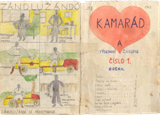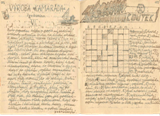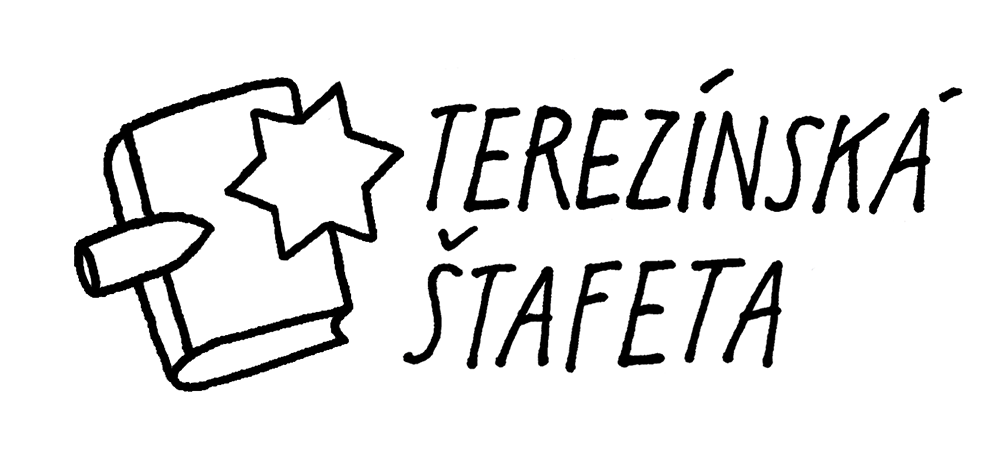THE MAGAZINE KAMARÁD
Kamarad was another very important magazine which was secretly released in the Terezin Ghetto. It was being published in the Q 609 block, in the children's home, located in a two-story building. Here, boys and girls of various ages and nationalities lived in ten rooms. Besides Czech Jews, there were also Jews from Germany and, for a while, children from Denmark. Pavel Gross, one of the subscribers to Kamarad described the part of house where boys lived this way: "On the first floor, we have a very nice room with a balcony, where the 23 of us live. The floor is mostly covered in trash, because, as it turned out, once the floor is swept, it gets dirty straight away and then it is the same as it was before. I better not talk about the toilet and lavatory. Those who live together with us know, that there the Second Earth Cataclysm dominates all year long."
Ivan Polak became the editor-in-chief of Kamarad. The magazine itself had altogether up to 22 subscribers aged between 11 and 15 years. In the period from October 1943 to September 1944 there were 22 issues released. At the start, the magazine was published every Friday, but as time went on, the releases were more irregular. The mission of Kamarad was introduced by its editor-in-chief Ivan in the first issue this way: "Today we released a new magazine, which should be a portrait of our home. It is our first independent step forward, it is a business which concerns everyone of us. It should not only be our entertainment and amusement when we are bored, but it should represent our home and give us a lesson as well. We should see our work in it, so, we should try hard to do the best we can. I expect help with the making of this magazine from everyone, and I hope that Kamarad will be a real friend to us one day."Although boys asked their educators to release Kamarad, they made at least the first 19 issues on their own. Every issue usually had 16 pages and, what's interesting, the numeration in every issue followed up numeration in the previous issue and all issues followed the same graphic layout. So the collection of all the issues resembled a book. The title page of all the magazines was always colourful and creativity in the main section is definitively not lacking. Main section of Kamarad was dedicated to the description of life in the children's house. An unsystematic chronicle was used,where situations which influenced life in the children's house were recorded. Mutual relationships, conflicts, friendship (Circs at Heim, Week Long Flow Line, The Chronicle of The Home, medaillons of Kamarad subscribers and of the other boys at the Home (Boys at Heim...))... Other articles were trying to show readers how the magazine was made. Some articles like How Is Kamarad Made, The Editorial Phone Calls wanted (this was a job for editor-in-chief Ivan, who wasdoing most of the editorial work) to involve other boys in releasing of theh magazine. A comic, Zándlužandó, often appeared on the backside of every issue, along with a number of cliff hangers (authors of these were also boys from heim), Fun Fair (riddles, crosswords, funny advertisements) and practical advice on health (Medical Corner). Last three issues which were released after months-long break in September and October 1944, are written in a different way, probably because educators influenced the release a lot. The editorial team and the other inhabitants of heim in Q 609 were already in December 1943 affected by the transports to the East. Transports in September and October 1944 from Terezin to Auschwitz Birkenau meant an end not only of the magazine but also of young lives of most of its authors.
This text is based on a bachelor thesis by Mgr. Lenka Steflova, "Kamarad, the children's magazine from the Ghetto Terezin". We would like to thank her very much for support and for the permission to use her texts.






